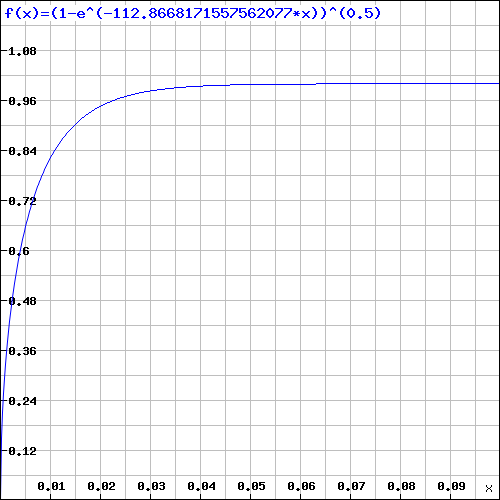When the radius of earth \({r}_{e}\) is shrunk to \({r}_{eo}\) = 0.00886 m light will not escape from it. The actual gravity of such a black hole is,
\(g=-\cfrac{{G}_{o}}{(x+{r}_{eo})^2}\)
\({g}_{eo}=-\cfrac{{G}_{o}}{{r}_{eo}^2}\) = -5.07071e18 ms-2
And the corresponding gravity equation is,
\(g=-{g}_{eo}{e}^{-\cfrac{{g}_{eo}{r}_{eo}}{{G}_{o}}(x)}\)
The corresponding time dilation field equation \(\gamma(x)\) is,
\(\gamma(x)=\sqrt{1-\cfrac{2{G}_{o}}{{c}^{2}{r}_{eo}}{e}^{-\cfrac{{g}_{eo}{r}_{eo}}{{G}_{o}}(x)}}\)
\(\cfrac{2{G}_{o}}{{c}^{2}{r}_{eo}}=1\)
\(\cfrac{{g}_{eo}{r}_{eo}}{{G}_{o}}=\cfrac{1}{{r}_{eo}}\) = 112.86681715575618 m-1
\(\gamma(x)=\sqrt{1-e^{-112.866x}}\)
This is a graph of time dilation \(\gamma(x)\) = (1-e^(-112.866*x))^(0.5) around a black hole. Time returns to normal very quickly at about 0.065 m. So much for time travel around a black hole; a 6.5 cm disk around which time dilation occurs is way smaller than expected.
